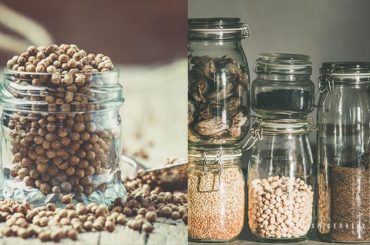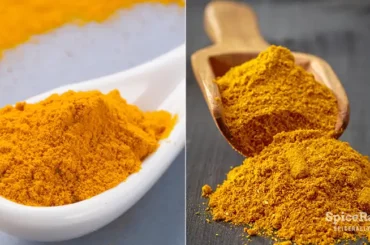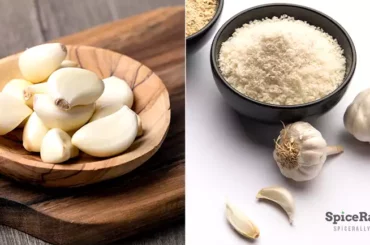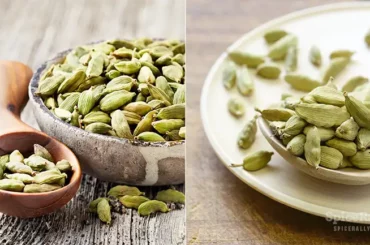Cayenne pepper is a commonly used cooking spice known for its considerable heat that scores about 30,000-50,000 on the Scoville heat scale. But, what can you do if you overpower your food with this spice? On that note, here’s how to fix too much cayenne pepper with practical methods!
Diluting your recipe in several ways can be the best way to cut down the heat gained by excessive cayenne pepper in your dish. In addition to this, you may balance out the flavor using a sweetener or even add an acidic or creamy ingredient. However, the latter methods should be applied depending on the elements of the particular dish.
Read along to find out how helpful this article can be for you!
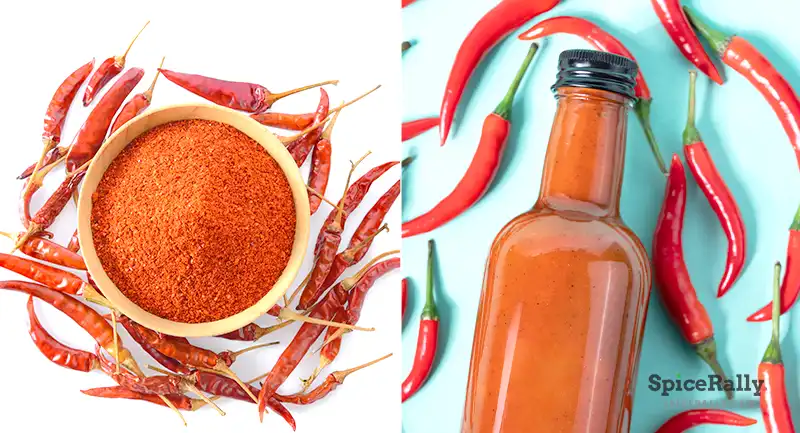
1- Diluting The Dish – Your Best Bet To Fix Too Much Cayenne Pepper
Cayenne pepper is used in two forms in our foods: fresh and powdered. Out of these two forms, powdered cayenne pepper is the most versatile to be used in various dishes.
In this case, trying to dilute your recipe when you have used cayenne pepper powder is effective and applicable in most instances regardless of the type of dish.
How Does Dilution Work?
When you go overboard with cayenne pepper, you can fix this issue with dilution in two main ways . The first and most effective way is to add more of the main ingredients featured in the dish. For example, add more meat, tomatoes, and even stock/broth, if you are heavy on this spice in your chili.
If you have overused this spice in sauces, soups, or any other liquid-based dish, you may undoubtedly dilute the dish by adding more liquid such as water. Likewise, this can work for any other recipe as you can do the perfect dilution by increasing the amount of the primary element accordingly.
The second method is to add a whole new batch without cayenne pepper to the batch you have the problem with. This method works best when you realize you have too much of the spice after you cook something and you want to fix too much cayenne pepper. Also, this is effective when making spice blends, seasoning mixtures, spice pastes, etc.
What Can You Expect By Dilution?
- Adding more of the main ingredient, a liquid, or replacing a new batch effectively reduces the unnecessary heat offered to your dish.
- The heat level of cayenne pepper will instantly tone down, reducing the burning sensation you could get through excessive usage. Less concentration will ultimately hinder the effect of capsaicin in cayenne pepper.
Downsides of Diluting A Dish With Too Much Cayenne Pepper
While this is the most adequate way to tone down the heat of this spice, it can still have some downsides which you might need to pay attention to:
- Dilution could potentially change the overall flavor profile of the dish. Therefore, you must balance all the other ingredients accordingly.
- Adding water in most cases tends to turn your recipe bland. So, diluting using water might not always work although it is the easiest.
- Making an extra batch to dilute the problematic bath can take time, effort, and extra ingredients. You may also get a doubled batch which is more than your requirement. Thus, sometimes it can be a waste if you don’t plan what to do for the additional quantity.
Other Recommended Ways to Tone Down This Spice In Your Dishes
2- Neutralize With A Sweetener
It is a habit that we pop something sweet in our mouths whenever we eat something too spicy or hot. Likewise, adding a sweetener to a dish heavy on cayenne pepper works equally effectively to reduce the heat.
Interestingly, this method works in many dishes regardless of the cooking method just as much as dilution. Cooking experts suggest using brown sugar will give more results. However, you may use common sweeteners like granulated sugar, honey, palm sugar, etc.
Mixing sugar with something acidic like lemon or lime juice can give you the best results to tone down the heat and fix too much cayenne pepper.
3- Removing The Excessive Amount Physically
This is one of the most practical ways especially if you use fresh cayenne pepper in a salad, salsas, etc.
You may even do it at once when you realize there’s too much of this spice before you grind, heat, or blend up something. This method is the easiest when you have bigger pieces of fresh cayenne pepper in your dish.
It is also convincing when you realize that you have put too much cayenne pepper powder on a piece of meat to rub it to be put on the grill. In this case, you can either wipe off or wash off the meat and season it again. See, pretty easy and compelling!
4- Toning Down The Heat Using A Creamy Ingredient
This approach only applies if the recipe calls for a dairy or non-dairy ingredient. Therefore, the involvement of this way is quite limited. However, you may try this when you go overboard with cayenne pepper in creamy soups, stews, curries, dips, etc.
Hands down with half and half, milk, cream, mayonnaise, coconut cream, and any other creamy element you have that is suitable for your dish. Predominantly, dairy products can impair the effect of capsaicin in cayenne pepper, The amount is solely dependent on the quantity of the recipe.
5- Use Nut Butter
The richness and amount of fat in most nut butter can tone down the heat of too much cayenne pepper. This method works best in dishes with a richer flavor profile like chili and curries.
Accordingly, you can use peanut butter, almond butter, cashew butter, etc. Most nut butter types are very subtle in flavor therefore you will not dull the overall flavor profile of your dishes. In addition, if you have used too much of this spice in butter-based spreads, you may use more butter to tone down the heat.
6- Balance Out The Heat Using Acidic Ingredients
Additional acid may not work in all dishes effectively. But still, there are many instances you can take the chance to mute the heavy heat of cayenne pepper using acidic ingredients.
Vinegar (balsamic, sherry, apple cider, etc.), lime juice, and lemon juice are some common and easily found types of acids that’ll help you out. The tartness of these ingredients can cut down the burning sensation of this spice, making a more pleasant flavor profile in your dish.
As discussed earlier, you may double the results by combining these acids with a sweetener like sugar. The amounts that should be used depend on the size of the batch you make and the type of dish.
What Are The Health Issues You Could Get By Consuming Excessive Amounts Of Cayenne Pepper?
Cayenne pepper has many health benefits when included in your dishes in combination with other spices. But still, it is essential that you consume this spice in moderation as excessive amounts may lead to serious health concerns. Some of them are as follows:
- Lingering burning sensation in the mouth
- Heartburn
- Stomach irritation
- Diarrhea
- Respiratory issues
- Skin and eye irritation
- May induce symptoms of IBS (irritable bowel syndrome) and GERD (gastro-oesophageal reflux disease)
- Complications with certain medication
What Should I Drink After Getting A Meal High In Cayenne Pepper?
Too much heat can leave an unpleasant burning sensation in your mouth. To soothe this effect instantly, water is your best bet. Room temperature or cold water is recommended rather than warm or hot water as it can worsen the problem.
In addition to this, you can drink something sweet like fruit juice, or even some milk if possible. However, it is important to stay hydrated throughout the day to minimize the adverse effects on your health from too much cayenne pepper.
Beat The Heat Of Excessive Cayenne Pepper By These Fixtures That Work Like Magic!
The iconic heat, warmth, and color we get in our food from cayenne pepper is simply unparalleled. It adds an immense depth to any dish but everything could be ruined if this spice is being overused. In this case, you can fix this common mistake by using methods like dilution, adding sweetener, creamy ingredients, etc. as we discussed throughout our article.

